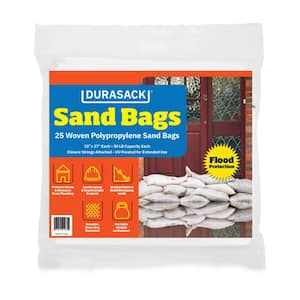
Difficulty
Intermediate
Duration
Over 1 day
With a backyard putting green made from synthetic turf, you can work on your golf game anytime you want. Synthetic turf makes this a maintenance-free project—no worries about growing and caring for grass. Instead, spend your time playing golf.
For a budget-friendly option, install a small DIY putting green with a single hole for practice. Create multiple holes in a larger yard. This guide will give you an overview on how to build a putting green.
Choose a Location and Design

There are many options for designing and making a DIY backyard putting green with synthetic turf. Do some research to choose the best installation process and putting green design for your yard. Once it’s installed, follow the manufacturer’s instructions on how to use and maintain the synthetic turf. If you prefer, buy a premade indoor/outdoor putting green or mat.
The first thing to decide on when figuring how to build a DIY putting green in you yard is deciding where to place it. Look for a level location with good drainage. When installing a putting green for backyard use, be sure to keep it away from your house and other structures so you won’t hit a window or person with a stray golf ball.
When determining how to build a synthetic putting green, sketch the size and shape of your design, including where the cups will go. For more interest, design a green with various challenges. Make sure any slopes are away from the center of the green, so puddles won’t form when it rains.
Take into account the width of the synthetic turf you plan to buy. Most artificial grass is sold by the length in rolls that are 7 1/2, 12 or 15 feet wide. Artificial turf also comes in different heights and naps. A lower nap is recommended for putting greens.
Finally, backyard putting green cost is affordable, especially if you decide to install it yourself.
Outline the Green and Remove Sod

Once you’ve finalized your design, use spray paint to outline it in your yard.
Now remove the sod from inside the outlined area. Use a sod cutter or cut the grass down to the dirt with a line trimmer.
Rake up any grass clippings and other debris.
Dig and Prevent Weeds

Excavate the area inside the outline. As a rule of thumb, go four to five inches deep for a crushed rock base. Spray a ground-clearing, long-term weed killer and put down a layer of landscape fabric over the bare dirt to ensure weeds and grass won’t grow back.
Put the Cups in Place

Another crucial step in installing a backyard putting green is deciding where the cups will go. The cups have holes in them, but if desired, dig small trenches leading from the cups, past the green, so rainwater can drain out. Put gravel in the trenches. Mark the locations for the cups so you can find them later.
Make the Base for Your DIY Putting Green

To make the base for the putting green, put crushed stone, such as 1/4-inch to 3/8-inch unwashed, crushed limestone, into the excavated area. Spread the crushed rocks out evenly with a rake or shovel.
Lightly moisten the rocks with a garden hose and run a plate compacter, lawn roller or gas-powered roller over them to make a smooth, flat base. Use a hand tamper to compact the rocks for a small putting green.
Remove the crushed limestone from the places where the cups will go. Use a spade or shovel to make holes for the cups. Use the hand tamper to compact the rocks around the holes, being careful not to hit the edges of the cups.
Smooth out any rocks that are sticking up with the backside of a lawn rake. Use sand to fill in small depressions or cracks between the rocks. Use a level to check that a 3-foot radius around each cup is smooth and flat. This will help the ball roll properly.
Pre-Shrink if Needed and Join Sections

Most synthetic turf is already sized, but if your manufacturer recommends it, unroll the turf and pre-shrink it by spraying it with a garden hose until it’s saturated. Let it dry for at least 24 hours.
Follow the manufacturer’s directions for cutting and joining sections of the synthetic turf. If you’re connecting sections, make sure the nap runs the same way in all of them.
Install and Cut the Synthetic Turf

Next, put the synthetic turf, or artificial grass, over the crushed stones and carefully cut out the shape and size of your design with a sharp utility knife.
Use your hands to press down on the turf and find the cups. Cut the holes out with the utility knife. To make the cups easier to clean out, drop the cut pieces of turf into the bottoms of the cups. Since most cups have drainage holes in them, so you can also just wash out any debris with a garden hose.
Secure the Turf

Use turf pegs or landscape staples to hold down the synthetic turf or follow the turf manufacturer’s instructions to secure it.
Install a Border and Landscaping

The last step in how to make a putting green is to install a border. A retaining wall, row of blocks or other edging will also work. Landscape around the green, if desired, and put a chipping mat above the putting green to help prevent damage to your real grass.
How to Maintain the Synthetic Turf

Like other outdoor sports equipment, to maintain the synthetic turf, sweep and hose it off regularly or follow the manufacturer’s directions. Some manufacturers recommend pouring sand over the turf and sweeping it into the turf to help hold it in place.
A backyard putting green is a great way to have fun at home. Go to the Home Depot for all the materials and landscaping supplies you need to build your own. The Home Depot also delivers online orders so you'll have materials on hand when you're ready to start your project.

























